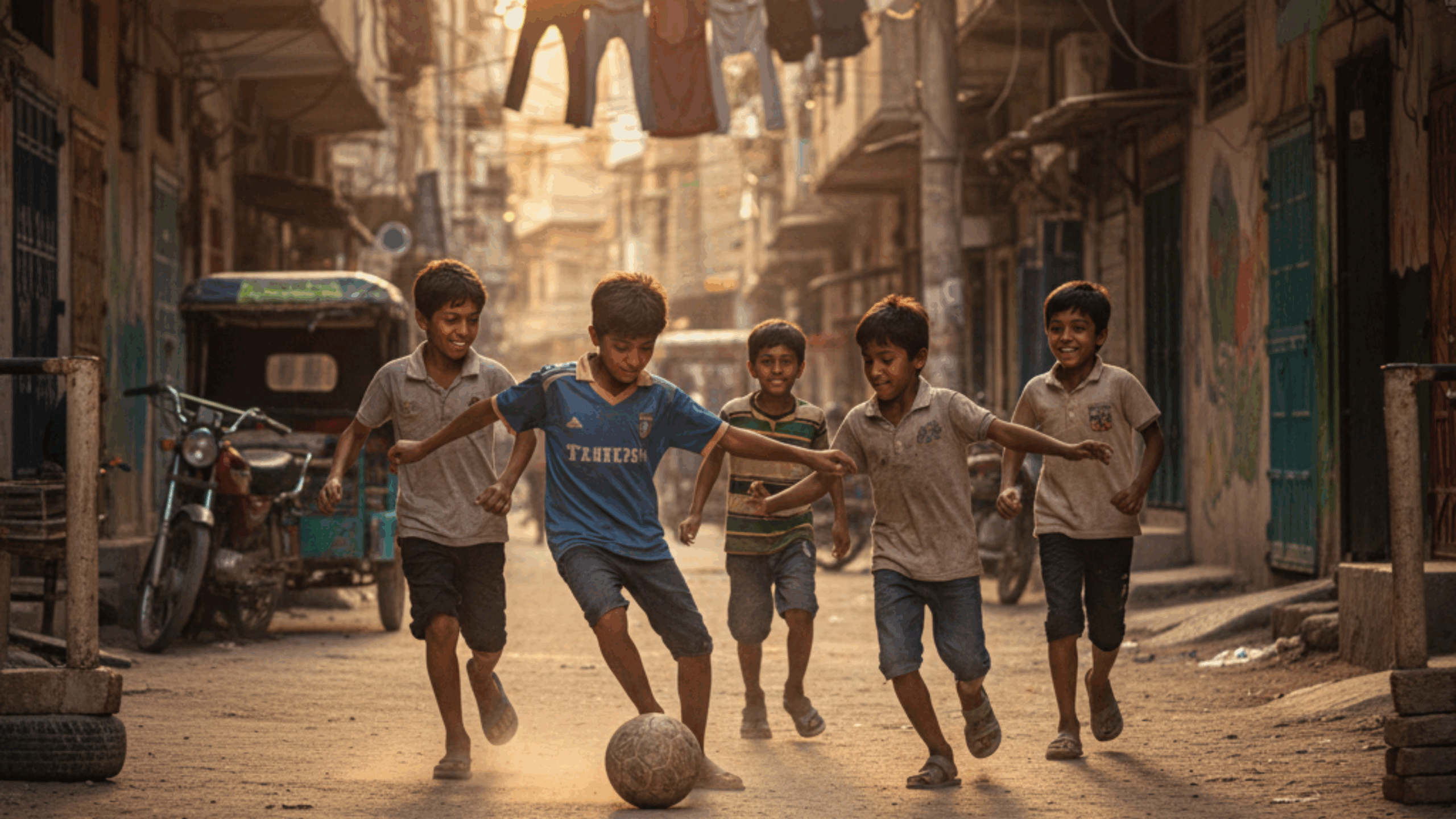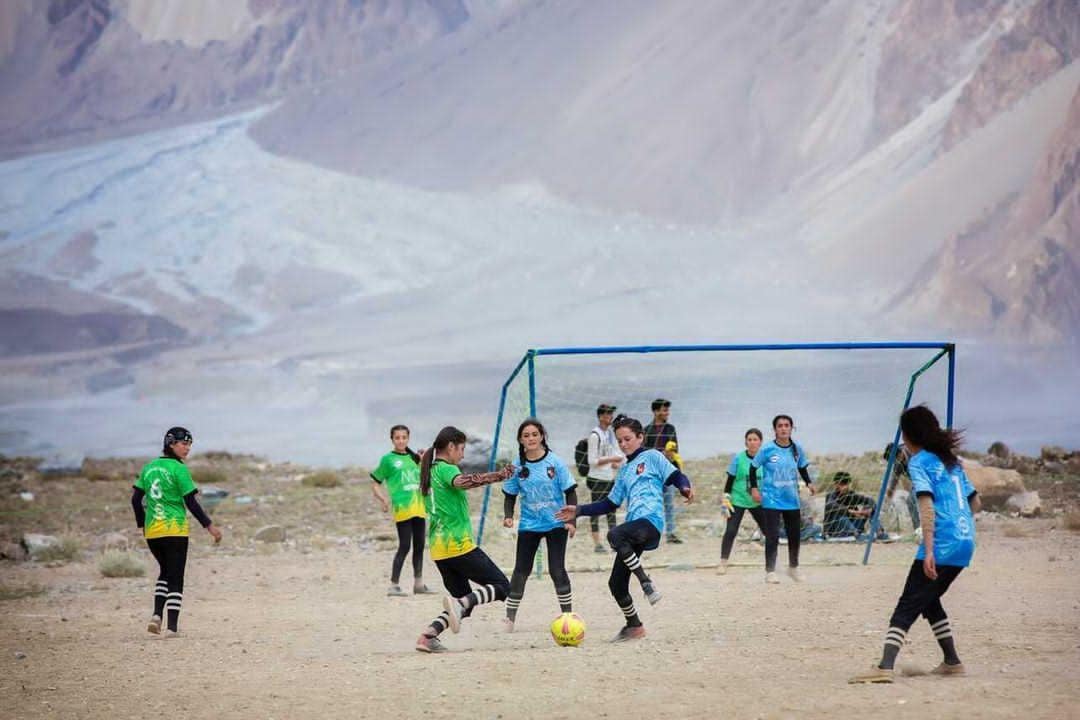NEWS

IN BRIEF
In Pakistan, where more than 62% of the population is under 30, violent extremism often feeds on exclusion, unemployment and identity crises. Yet on the playgrounds of Karachi, Gilgit-Baltistan and beyond, sports are emerging as a powerful antidote. Football matches, cricket leagues, and even the revival of kabaddi are transforming conflict-prone spaces into hubs of resilience and inclusion. Sports not only create safe spaces for youth but also teach discipline, teamwork, and conflict resolution, values that counter extremist narratives. When combined with education, leadership, and community engagement, these initiatives go beyond the field to foster peace, empowerment, and unity.
SHARE
A Match that Goes Beyond the Field
On a dusty ground in Lyari, Karachi, young boys play football while girls cheer from the sidelines. For many, this is an ordinary scene. But for the residents of Lyari, a community long associated with conflict and violence, it is extraordinary. A ball at the feet of a child has become more powerful than a weapon. This transformation is not accidental; it is part of a growing recognition that sports can serve as an innovative tool to prevent violent extremism (PVE) in Pakistan.
Understanding the Challenge of Violent Extremism
Pakistan has one of the largest youth populations with more than 62% of the total population under the age of 30. This demographic is often seen as both a strength and a vulnerability. While young people bring energy, creativity, and resilience, they also face unemployment, lack of opportunities, political exclusion, and social injustices. In such conditions, extremist groups exploit feelings of alienation and grievance, offering youth a false sense of belonging and purpose.
Traditional approaches to countering extremism have relied heavily on security measures, but global and local experiences show that prevention must also address root causes such as inequality, exclusion, and identity crises. Sports with their universal appeal and capacity to bring people together, have emerged as a meaningful response. Sports offer far more than physical activity. They create safe spaces where individuals learn discipline, teamwork, respect for rules, and resilience. These values counter the divisive ideologies that violent extremist groups often promote. In the Pakistani context, cricket, football, kabaddi, and traditional games carry cultural resonance, making them effective entry points for engaging youth in positive ways.
Some key contributions of sports to PVE include:
- Safe Spaces: Playing fields become neutral grounds where rival ethnic, sectarian, or political groups interact without conflict.
- Social Inclusion: Marginalized youth, including girls and minorities can find representation and empowerment.
- Resilience: Sports teach youth how to cope with failure, manage emotions, and resolve conflicts peacefully.
- Education: Sports-based initiatives often integrate life skills, civic awareness, and dialogue sessions.
- Empowerment: Through leadership roles such as team captains or referees, youth develop confidence and agency.
Case Studies from Pakistan
Several initiatives across the country explain the transformative power of sports in promoting peace and resilience:
- Gilgit-Baltistan Girls Football League (GBGFL): In a conservative region where girls’ public participation is restricted, young women organized Pakistan’s first girls’ football league. Their courage not only challenged gender norms but also inspired hope, proving that sports can redefine identities and open new possibilities.
- DOSTI Project (Karachi, KP, Sindh): By organizing football and cricket matches among diverse communities, this initiative built bridges across ethnic and sectarian divides. It reduced gang-related recruitment in urban slums by replacing violence with healthy competition.
- Lyari Safe Learning Environments: Combining education with sports, this program offered young people an alternative narrative to the violence dominating their streets. It created role models who inspired others to reject gang culture.
- Promoting Interfaith Harmony in Islamabad’s Slums: Sports tournaments involving Muslim, Christian, and Hindu youth cultivated interfaith understanding, breaking down prejudices and promoting coexistence.
- Reviving Kabaddi in Mansehra: Reintroducing a traditional sport gave local youth a sense of cultural pride, identity, and safe expression, routing them away from extremist narratives.
These examples highlight that when sports are embedded within broader community initiatives, they can transform vulnerable spaces into hubs of resilience and inclusion.

Source: Gilgit-Baltistan Girls Football League
The Five-Zone Approach to Sports and PVE
Based on UNODC and local frameworks, a five-zone model has been suggested for using sports in PVE:
- Safe Spaces: Creating neutral spaces where youth can interact without fear or discrimination.
- Social Inclusion: Ensuring participation of marginalized groups, including women, minorities, and persons with disabilities.
- Education: Linking sports with civic education, life skills, peacebuilding, and critical thinking.
- Resilience: Teaching coping mechanisms, conflict resolution, emotional control and healthy competition.
- Empowerment: Building leadership, ownership, and community responsibility among youth.
This five-zone approach provides a holistic framework for incorporating sports as a tool for PVE in Pakistan, and it aligns with global best practices in using sports for peace.
Challenges in Implementation
While sports offer unique opportunities, there are limitations that must be addressed for sustainable impact:
- Cultural Sensitivities: In conservative areas, mixed-gender activities may trigger backlash. Programs must adapt, such as holding gender-segregated sessions.
- Risk of Stigmatization: Labelling initiatives as “counter-extremism” can alienate participants. Neutral language focusing on “youth empowerment” or “peacebuilding” is more effective.
- Monitoring Impact: Measuring whether sports actually reduce vulnerability to extremism remains complex. Stories of change, participatory evaluation, and localized tools are needed.
Localizing Monitoring and Evaluation (M&E)
Global frameworks often fail to capture Pakistan’s complex realities. For instance, ethnic diversity, sectarian sensitivities, and gender norms shape how youth engage in sports. A localized M&E approach should include:
- Disaggregated data (by gender, ethnicity, religion, and region).
- Trauma-informed tools that account for youth in conflict-affected areas.
- Participatory evaluations such as digital diaries, storytelling, or “photovoice” methods.
- Community validation by elders and religious leaders to build legitimacy.
Such methods ensure that sports programs not only record outputs (number of tournaments held) but also capture outcomes (youth building trust, women gaining mobility, communities reducing tensions).
Policy Recommendations
For sports to serve as an effective PVE tool in Pakistan, a multi-layered approach is essential:
- Integrate Sports into National Youth and PVE Policies: Align sports-based programs with the National Action Plan (NAP) and National Youth Development Framework.
- Invest in Grassroots Sports Infrastructure: Provide safe spaces in conflict-prone districts, especially in Balochistan, South Punjab, and Khyber Pakhtunkhwa.
- Promote Female Participation: Provide safe environments, parental engagement, and female role models to break barriers.
- Build Partnerships: Engage civil society organizations, madrassa networks, teachers, police youth engagement units, and religious scholars to enhance legitimacy.
- Train Coaches as Mentors: Coaches should be equipped to identify early warning signs of vulnerability, offer psychosocial support, and introduce life skills.
- Encourage Youth Leadership: Programs should create opportunities for young people to become coaches, referees, or organizers, strengthening their stake in community resilience.
From Playgrounds to Peace
In Pakistan’s fragile security landscape, violent extremism thrives on despair, exclusion, and identity crises. Sports alone cannot resolve these deep-rooted issues, but they can provide a powerful entry point to resilience. A cricket match in Multan, a football tournament in Gilgit-Baltistan, or a cycling club in Karachi may seem like small events, but they carry the seeds of social transformation.
When linked with education, inclusion, and empowerment, sports become more than games; they become shields against hatred and bridges toward peace. For Pakistan, investing in sports as a PVE tool is not just about building athletes, it is about building hope, unity, and a future where the youth choose the ball over the bullet.
About the Author
Syed Raza Ali Shah is Programs Manager at Accountability Lab Pakistan and can be reached at raza@accountabilitylab.org
